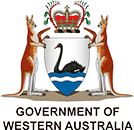Hand and finger fractures
Call triple zero (000) and ask for an ambulance or go to hospital immediately if bone is visible through the skin, if there is heavy bleeding or if the injured area is an unusual colour or shape.
Key facts
- A hard knock to your hand can break the bones in your fingers and hand.
- A fracture is a break in a bone.
- If you fracture your finger or hand, you will have pain, swelling and trouble moving your hand.
- See your doctor if you think you have a hand or finger fracture.
- Treatment includes immobilisation, hand therapy and surgery.
What are hand and finger fractures?
A fracture is when you have a crack or break in your bone. If you injure your hand, you may break a bone in your finger or another part of your hand.
Hand and finger fractures can happen to people of all ages.
What symptoms are related to hand and finger fractures?
You might have:
- pain
- bruising and swelling
- difficulty moving your hand
- a change in the colour of your skin
- deformity (different shape to usual)
- a wound — cuts and bleeding
You may also have numbness or tingling in your hand and fingers.
If you are in severe pain or have a wound that won’t stop bleeding, get medical care straight away.
CHECK YOUR SYMPTOMS — Use the Symptom Checker and find out if you need to seek medical help.
What causes hand and finger fractures?
Some causes of hand or finger fractures are:
- accidents and injuries
- health conditions that weaken your bones
- overuse and repetitive use
Accidents and injuries
Many types of injuries can lead to hand and finger fractures. Here are some situations when you might hurt your hand:
- playing sports and exercising
- doing manual labour
- if you trip or fall
- getting your hand caught in a door
- a car accident
If you punch a hard object or fall onto a closed fist it can cause a broken finger.
Falls are the number one cause of accidental injury in older Australians. If someone falls, it's not necessarily because they are not concentrating or they are clumsy. There are many reasons why older people might have a fall, such as having certain conditions, dangers around the house and changes to the body.
Health conditions
The most common symptom of osteoporosis is a bone fracture. Osteoporosis is caused by a decrease in your bone density. This makes your bones more fragile and easier to break.
Some types of cancer can also weaken your bones.
Overuse
Some jobs, sports and activities involve repetitive movements (doing the same thing again and again). Repeated movements can overuse your hands. This slowly weakens the bones and increases your chance of fractures.
How are hand and finger fractures diagnosed?
Your doctor will ask what has happened. They will examine your hands and check how well you move each finger. They will check for other injuries and problems. They might ask if this is your dominant hand (the hand you use the most).
Your doctor will probably send you for an x-ray. You may also need to have a bone scan or CT scan.
ASK YOUR DOCTOR — Preparing for an appointment? Use the Question Builder for general tips on what to ask your GP or specialist.
When should I see my doctor?
If you think you have broken a bone in your hand, and you experience the following, you should see a doctor:
- pain
- bruising and swelling
- difficulty moving your hand
If your hand or finger does not seem to be getting better, visit your doctor again.
If you need to see your doctor but cannot wait for an appointment, you may be able to get treatment at a Medicare Urgent Care Clinic. Use the Service Finder to find your nearest one.
When to seek urgent care
You should get medical help as soon as possible if:
- you see bone coming through your skin
- you have severe pain
- you can’t stop the bleeding from a wound
- you can’t move your hand
- your hand is a strange shape
- you have lost feeling in your fingers
- you have signs of infection, such as redness, pus or very warm skin
FIND A HEALTH SERVICE — The Service Finder can help you find doctors, pharmacies, hospitals and other health services.
How are hand and finger fractures treated?
At first, you may need to use a splint if you have broken your finger or a bone in your hand. This will immobilise your hand (hold it in place).
You may need treatment for pain and swelling.
Your doctor may refer you to a specialist, such as an orthopaedic surgeon (bone doctor).
Later you may be asked to do hand exercises. You might need another x-ray to check your progress.
Be sure to attend all follow-up appointments and follow the instructions you get.
Self-care at home
When the hand injury has just happened, apply first aid. This may include:
- using a cushion or towel to support your hand above and below the injury
- calling for help
- putting an ice pack on the area — always cover an ice pack with a cloth before placing on your skin
- keeping your arm and hand still
- elevating (raising) your hand
- taking pain-relief medicine
You may also have other cuts and grazes that need treatment.
Medicines for hand and finger fractures
To control any pain and swelling, you can take:
Always follow the instructions on the pack.
Other treatment options
Your doctor may suggest exercises to make sure your fingers can move well as they get better. Or they may refer you to a hand therapist. A hand therapist is a physiotherapist or occupational therapist that is an expert in treating hand and arm injuries.
Your doctor or specialist may suggest surgery to reset the bone in your finger or hand.
What are the complications of hand and finger fractures?
Your hands are very important for doing daily tasks. If your hand or finger fracture does not heal properly, you could have problems later, such as:
- stiffness in your finger joint
- change in shape of your hand or finger
- scar tissue which can make your hand or finger less flexible than before the injury
If your hand injury does not heal well, it can make it hard to do tasks at work or home.
If your skin has been broken, you may get an infection.
Rarely, a broken bone can damage a nerve or blood vessel. This needs urgent treatment.
Can hand and finger fractures be prevented?
You can’t always prevent the causes of fractures. But you can take some steps to make hand and finger injuries less likely. Build your bone strength — get enough calcium and vitamin D.
Check that all your spaces are safe, well-lit and organised including:
- at work
- when playing sports or exercising
- when doing manual labour
- when you do chores at home
You must be provided with training and safety equipment at work.
Visit Kidsafe Australia to find out how you can prevent accidents involving children.
Other health conditions
You are more likely to get bone fractures if you have a health condition such as osteoporosis. Osteoporosis weakens your bones. If you have osteoporosis, follow your doctor’s advice about your:
If you have risk factors for fractures or osteoporosis, you may need a bone density scan.
Read about more things you can do to prevent falls in older people.
Resources and support
- If you are worried about fractures, ask your doctor or specialist for advice.
- Find out more about limb injuries.
- Learn about first aid for broken bones at the Red Cross website.
- Visit the Know Your Bones site to find out your bone health score.
- You can also call the healthdirect helpline on 1800 022 222 (known as NURSE-ON-CALL in Victoria). A registered nurse is available to speak with you 24 hours a day, 7 days a week.
Learn more here about the development and quality assurance of healthdirect content.
Last reviewed: March 2025



















